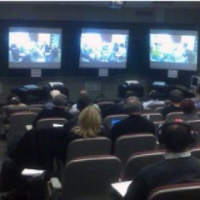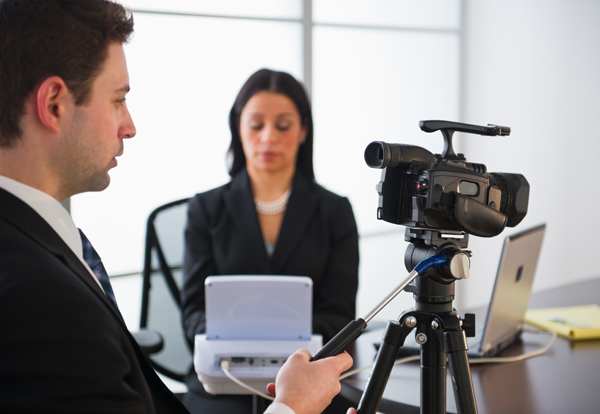Why Lawful Videography Is Critical for Accurate Court Recordings
The duty of legal videography in court room settings can not be overstated, as it offers as an important device for preserving the stability of court documents. The implications of incorporating lawful videography into common court room methods elevate vital concerns concerning its more comprehensive impact on the lawful system.
Importance of Visual Proof
In the realm of legal proceedings, the importance of aesthetic evidence can not be overemphasized. Aesthetic proof serves as an effective device in developing facts, affirming testimonies, and improving the total quality of a case. This sort of proof, which consists of pictures, video clips, and diagrams, can provide a concrete context that spoken summaries typically do not have, therefore offering juries and judges a clearer understanding of the circumstances surrounding a case.
Furthermore, aesthetic proof help in the retention of details. Human cognition is naturally aesthetic, and individuals are more probable to keep in mind and understand details presented in a visual format. In the court room, this can be critical, as engaging aesthetic proof can persuade viewpoints and enhance the narrative presented by lawful reps.
In addition, making use of aesthetic evidence can reduce misunderstandings and ambiguities that commonly occur from spoken exchanges. By supplying a direct representation of occasions, aesthetic evidence helps to remove subjective interpretations and fosters an extra unbiased evaluation of the facts. Consequently, the assimilation of aesthetic evidence right into legal proceedings not just enhances the stability of the judicial process yet likewise enhances the chance of accomplishing a just result.
Capturing Non-Verbal Hints
Utilizing sophisticated videography techniques can substantially improve the capture of non-verbal signs during lawful proceedings. Non-verbal interaction, including face expressions, body movement, and eye get in touch with, plays an important function in conveying feelings and purposes that may not be clearly stated in spoken testimony. legal videography. Legal videography uses high-definition video cameras and strategic angles to make sure that these refined cues are videotaped with clarity and precision
The capacity to analyze non-verbal habits can offer beneficial context to statements made during court sessions. For example, a witness's reluctance or confidence can be translated via their posture or gestures, potentially influencing the jury's understanding of reliability. The use of close-up shots can aid concentrate on an audio speaker's expressions, allowing for a more nuanced understanding of the testimony.
Additionally, integrating several video camera angles can produce a detailed view of interactions, highlighting dynamics between celebrations included. This multifaceted method not only enhances the accuracy of the court document yet additionally help in maintaining the honesty of the judicial process - legal videography. Eventually, catching non-verbal cues through lawful videography promotes a richer, a lot more full representation of courtroom procedures

Enhancing Statement Dependability
The reliability of testimony can be substantially strengthened through making use of top notch lawful videography. Video clip recordings offer as an unbiased medium that records not only the talked words of witnesses however additionally the nuances of their distribution, including tone, pacing, and psychological expressiveness. This diverse documents offers a more clear understanding of the witness's integrity and objectives, which can be crucial in legal process.
Furthermore, lawful videography decreases the capacity for misinterpretations that might emerge from composed records alone. When jurors can observe a witness's disposition and body movement together with their statement, they are much better equipped to evaluate the credibility and reliability of the evidence provided. This aesthetic context can reinforce the testimonial narrative, making it a lot more engaging and trustworthy.
Additionally, the existence of a video recording can prevent potential disparities in testament. Witnesses might be much more careful in their declarations when they know they are being taped, bring about more exact and genuine accounts. Overall, premium lawful videography boosts the integrity of testimony, making sure that the court has accessibility to a full and truthful depiction of the realities as shared by the witnesses.
Sustaining Appeals and Reviews
Legal videography plays a vital duty in sustaining appeals and evaluations by supplying a thorough visual record of court procedures. This aesthetic documents captures not only the talked words of witnesses and lawyers but also the nuances of body language, intonation, and court room characteristics. Such aspects can be essential in recognizing the context of testaments and debates offered.
In the appellate procedure, where the emphasis is on errors of law and procedural justness, a video clip record can act as an important tool for appellate courts. It allows judges to evaluate the original trial context, making sure that choices are based upon a total understanding of the procedures. The capacity to aesthetically examine the temperament of witnesses or the communications in between events can disclose understandings that created transcripts may overlook.

Furthermore, legal videography can aid in making clear obscurities in testimonies or step-by-step additional info judgments, consequently strengthening the basis for an allure. By using a reputable, objective account of what taken place in court, lawful videography not only sustains the integrity of the lawful process yet likewise encourages all celebrations original site entailed to make educated choices concerning their cases.
Streamlining Courtroom Processes
Enhancing court performance, legal videography improves procedures by giving immediate access to visual records of procedures. This modern technology allows judges, attorneys, and juries to review essential testimony and evidence, guaranteeing that all celebrations have a clear understanding of the situation. By recording the subtleties of spoken and non-verbal interaction, videography improves the document, making it less complicated to grasp the context and weight of testimonies.

Furthermore, video recordings Check This Out can facilitate remote engagement in hearings, permitting for higher versatility in organizing and participation, which is specifically useful in complex cases entailing several stakeholders.
Conclusion
In verdict, lawful videography plays an important role in making certain accurate court recordings by offering necessary visual proof that catches both verbal and non-verbal interaction. This method boosts the dependability of testaments, sustains appellate reviews, and enhances court processes. By fostering an extensive understanding of courtroom dynamics, lawful videography inevitably adds to a lot more fair judicial end results, strengthening the honesty of the lawful system and helping with educated decision-making.
Comments on “Legal Videography: A Powerful Tool for Ensuring Courtroom Transparency”